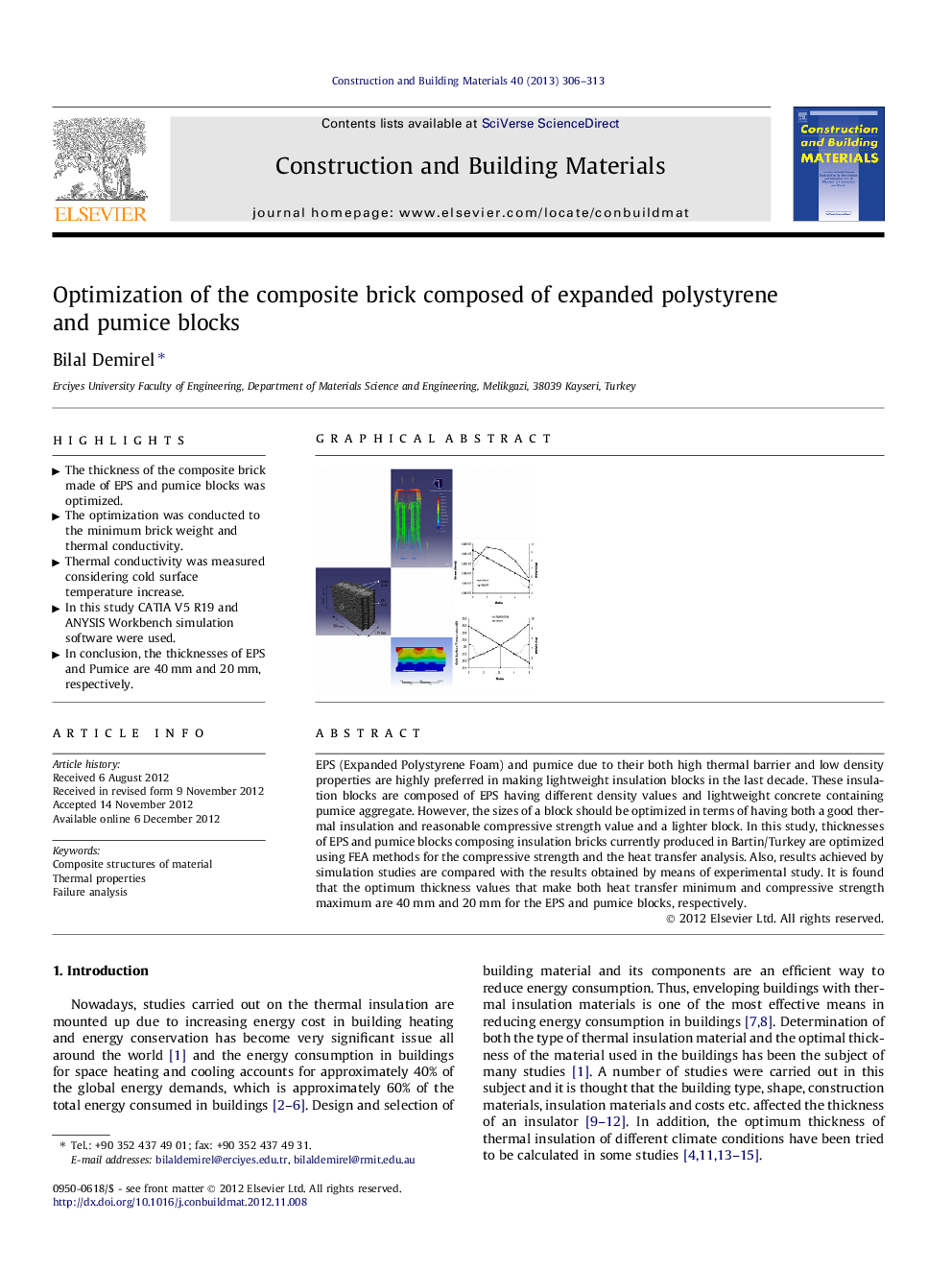| Article ID | Journal | Published Year | Pages | File Type |
|---|---|---|---|---|
| 258267 | Construction and Building Materials | 2013 | 8 Pages |
EPS (Expanded Polystyrene Foam) and pumice due to their both high thermal barrier and low density properties are highly preferred in making lightweight insulation blocks in the last decade. These insulation blocks are composed of EPS having different density values and lightweight concrete containing pumice aggregate. However, the sizes of a block should be optimized in terms of having both a good thermal insulation and reasonable compressive strength value and a lighter block. In this study, thicknesses of EPS and pumice blocks composing insulation bricks currently produced in Bartin/Turkey are optimized using FEA methods for the compressive strength and the heat transfer analysis. Also, results achieved by simulation studies are compared with the results obtained by means of experimental study. It is found that the optimum thickness values that make both heat transfer minimum and compressive strength maximum are 40 mm and 20 mm for the EPS and pumice blocks, respectively.
Graphical abstractFigure optionsDownload full-size imageDownload as PowerPoint slideHighlights► The thickness of the composite brick made of EPS and pumice blocks was optimized. ► The optimization was conducted to the minimum brick weight and thermal conductivity. ► Thermal conductivity was measured considering cold surface temperature increase. ► In this study CATIA V5 R19 and ANYSIS Workbench simulation software were used. ► In conclusion, the thicknesses of EPS and Pumice are 40 mm and 20 mm, respectively.
